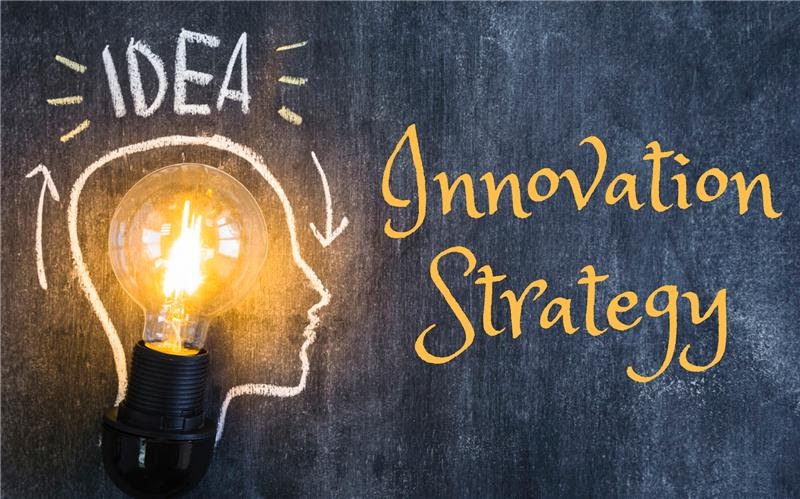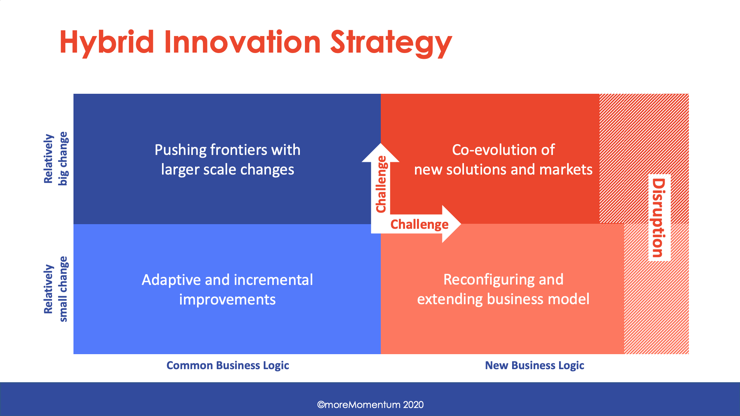How to Build a Growth-Driven Service Innovation Portfolio
A balanced mix of sustaining, adjacent, and transformational innovations is essential for long-term success in B2B manufacturing, but many companies...
6 min read
Jan van Veen
Sep 1, 2023 11:33:46 AM

Driving your service innovation strategy is crucial for swift and effective transformation in B2B manufacturing. By aligning with corporate goals, embracing various types of innovation, and smartly allocating resources, you will accelerate transformation and achieve lasting service growth.
In today's hyper-competitive landscape, service innovation has become a make-or-break factor for B2B manufacturers. No longer is it enough to simply offer a solid product; you've got to constantly innovate your service offerings to keep up with customer demands and outpace competitors.
And speaking of pace, let's not underestimate its importance. The rate at which you adapt and innovate can seriously affect your transformation journey and growth prospects. So, how do you get ahead?
In this article, we will dive into the significance of formulating a winning service innovation strategy and improving the alignment of your service innovation with your broader corporate strategy. We will also explore the different flavours of innovation you can tap into and discuss smart ways to allocate your resources.
Whether you're a service leader or an innovator in the B2B manufacturing sector, you'll find actionable insights to make your service transformation journey swift and successful.
Read more about Service Innovation in our
Ultimate Guide for Service Innovation
As per Roger Martin's concept, a winning strategy is an integrated set of choices that gives a competitive advantage while considering constraints and uncertainties. These choices revolve around a few pillars:
Translating this into a winning service innovation strategy means aligning your innovation efforts with your broader service transformation and corporate strategies. Here, the choices are specific to what service elements to innovate. The aim is to create service innovation initiatives and capabilities that foster differentiation and growth, especially in a disruptive world.
What differentiates leaders from laggards in service transformation? It's the strategic choices they make for their service innovation. Leaders identify and focus on service innovations that:
Alignment between service innovation strategy and corporate strategy is more than just a best practice; it's a critical factor for achieving long-term success. Failing to align these strategies can lead to a lack of commitment and support from stakeholders and missed opportunities for synergy within both the service organization and the broader enterprise.
However, it's not a one-way process. While service innovation needs to be in sync with corporate objectives, it should also feed into and influence the overarching corporate strategy. Consider this: Service innovations often unearth new customer needs, efficiencies, and market opportunities. A considerable portion of growth potential for manufacturers stems from areas like digital transformation and data analytics, which at their core are service offerings. Overlooking these insights when shaping your broader corporate strategy is akin to ignoring low-hanging fruit—a missed opportunity that could make all the difference in your competitive landscape.
So, how do you ensure this crucial alignment?
Regular Communication: Foster an open line between service innovation teams and corporate strategists. Regular updates and checkpoints ensure that both parties are on the same page.
Shared KPIs: Establish shared key performance indicators (KPIs) that reflect corporate objectives and your service innovation's aims.
Feedback Loops: Create mechanisms to feed insights from service innovation into corporate strategy. Whether it's customer feedback or data on new efficiencies, ensure this information flows both ways.
The alignment of service innovation with corporate strategy is a dynamic and mutually influential relationship that, when managed well, can be a significant catalyst for growth and differentiation.
Pace is critical in service transformation for a straightforward reason: the market waits for no one. In the fast-changing landscape of B2B manufacturing, where customer expectations and technologies are evolving at breakneck speed, the tempo of your service transformation can make or break your competitiveness. Slow and steady doesn't always win the race here; agility does.
Speed isn't just about keeping up; it's a competitive advantage in its own right. A quicker pace allows you to adapt to real-time customer needs, pre-empt competitors, and capture market opportunities that others might miss. Simply put, speed is the new battleground; the quicker you can turn ideas into implemented innovations, the stronger your market position will be.
First up, Time Window. Think of innovation in terms of today, tomorrow, and the day after tomorrow.
Now, onto Types of Innovation:
Understanding these types of innovation can guide you in making strategic choices for your service transformation, whether aiming to protect your current market share or shoot for exponential growth.
Last but not least, Protect vs. Grow. The kind of innovation you choose can either be protective or growth-oriented.
So, how do you balance these? Ring-fence your innovation budget into separate buckets for different types and time windows of innovation. That way, you're not pitting incremental improvements against disruptive ideas; each has its own space to prove its worth.
To sum up, understanding and applying these different types of innovation within your strategic timeframe can significantly impact whether your service transformation merely keeps pace or sets the pace.
Avoiding internal competition for funding is essential; otherwise, less risky, incremental innovations may hog the budget due to their quicker returns and lower risks. As a result, ground-breaking projects could get overlooked or underfunded.
Determining the size of your service innovation budget and the share for each type is a strategic decision. Different types of innovation demand different levels of investment, both in time and resources.
The concept of 'ring-fenced' budgets can be a game-changer. It assigns a dedicated, non-negotiable financial allowance to each type of innovation. This way, disruptive projects aren't left fighting for leftovers from incremental ones. Each category gets its dedicated focus and funding, ensuring a balanced innovation portfolio.
In summary, a thoughtful approach to budget structuring is vital. It's not merely about having funds available but about allocating them wisely across your innovation initiatives. A strategic financial plan can elevate your service innovation efforts or send them into a tailspin. Make sure it's the former.
Effective service innovation isn't just about ideas; it's about turning those ideas into real-world solutions.
That takes a range of core capabilities:
So, you see, a robust set of skills and processes makes your innovation efforts tick. Each of these capabilities is a vital gear in the innovation machine. Get them all turning in sync, and you're well on your way to making your service innovation a resounding success.
A well-crafted service innovation strategy is not just a nice-to-have; it's the cornerstone for long-term success in today's dynamic B2B manufacturing landscape.
It's all about making smart choices—from aligning with corporate goals to picking the right type of innovation and efficiently allocating resources. But remember, pace is vital. The faster you adapt and innovate, the greater your competitive edge will be.
So, service leaders and innovators, the ball's in your court. Leverage the insights and recommendations in this article to maintain a winning pace in your service transformation journey. It's time to turn insights into action and keep that innovation engine humming!
The Service Transformation Summit on Advancing Your Service Innovation Capabilities covered the content of this article and more, such as:
This Summit, which took place on June 5-6, 2024, was a unique opportunity to deepen your understanding of these topics, connect with industry leaders, and engage in enriching discussions about real-world cases of your like-minded peers.
So, if you're passionate about service transformation and are committed to sparking positive change in your organization, we warmly invite you and your service leadership teams to join us at our upcoming Summits.
Let's transform the service industry together.
Subscribe for the our Impulse Letter
With regular updates about service news, trends and best practices.

A balanced mix of sustaining, adjacent, and transformational innovations is essential for long-term success in B2B manufacturing, but many companies...

One of the key challenges confronting manufacturers today, as they embark on their service transformation journey, is building strong service...

Strategic focus in service transformation demands good alignment of global teams and stakeholders. This promotes agility in strategy execution and...